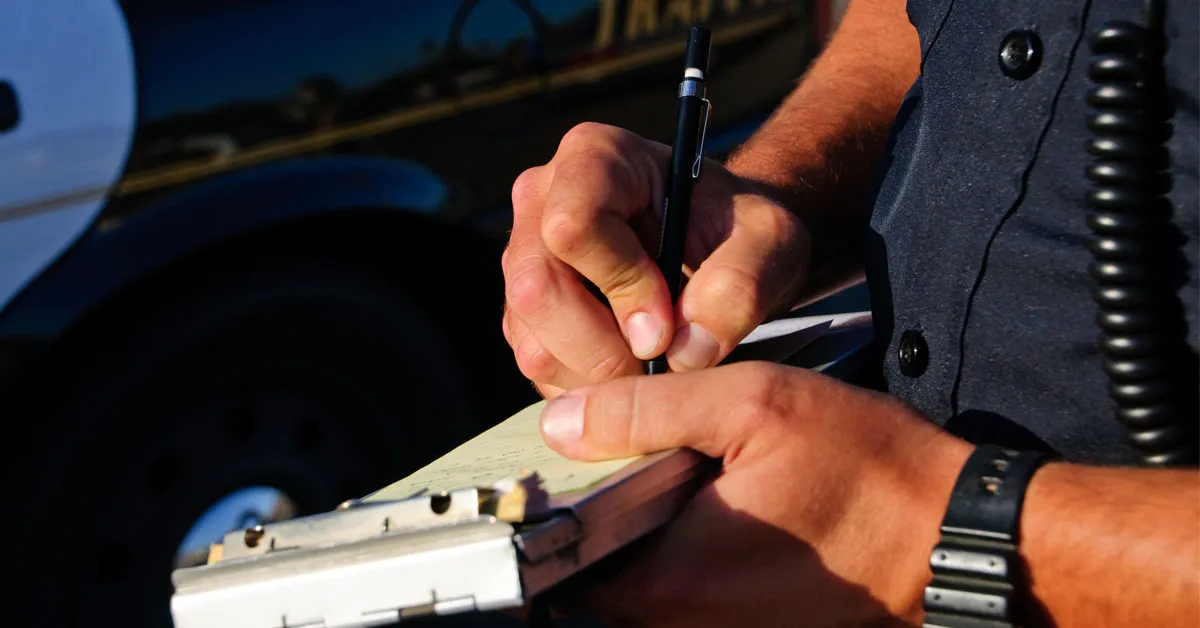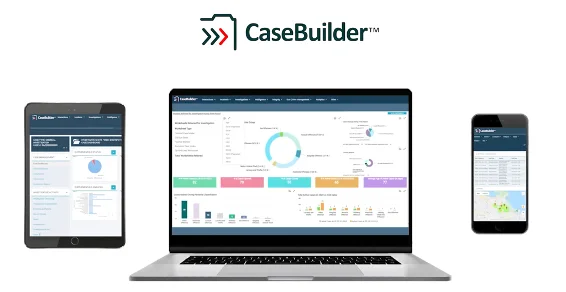
A use of force report is a critical piece of documentation that shouldn’t be taken lightly by field officers and supervisors alike – no matter the severity of the incident. In this blog, we cover 4 high-level standards to follow when putting these reports together.
In today’s volatile climate, amid the pandemic and national unrest, we have a duty as law enforcement to engage in difficult or perhaps uncomfortable conversations when it comes to use of force. To move forward, spur positive change and uphold the mission to serve and protect, we must address the reality of the situation head-on.
What Does “Use of Force” Mean?
“Use of force” can be defined as a situation in which a law enforcement officer interacts with an unwilling individual and force is used, either in self-defense or to compel compliance. In most circumstances, this is simply a necessary aspect of the job and does not connote a violation on part of the officer. After all, people do break the law, and when officers take them into custody, they may not always be voluntarily compliant, or in a sober enough state to submit to going to jail.
Most problems occur when a more serious, excessive use of force incident takes place. These are very likely to result in civil lawsuits or other liability. And when those serious incidents occur, the need for proper documentation on the part of the police seems obvious. But even the smallest incidents can cause problems if there’s a lack of sufficient documentation.
This is because documentation provides accountability. So, we can protect the good officers and weed out the bad ones. If we establish a comprehensive, automated documentation process for even the smallest incidents, we will be more prepared to investigate any serious or excessive incidents.
But what actually qualifies as a use of force incident in the first place?
What Counts as Use of Force?
The short answer for an officer: anything that prompts a question in the mind of “should I file a use of force report?”
Use of force could mean physical strikes, but in some jurisdictions, it could also mean yelling loudly into the face of an individual. What about when a police canine takes an attack stance and growls aggressively at a subject, even when it’s still restrained? Should that warrant documentation, too? Hopefully, your agency has well-written guidelines to help answer these questions, but it’s generally wise to err on the side of caution.
Bottom line, if you think it could be considered force – or, rather, you think it could be a reason for a complaint of excessive force down the road, no matter how trivial – then document it. You’ll be glad you did.
Generally, use of force can be organized into three categories. These are as the NYPD discloses them, so your agency may define it differently. However, they represent a good standard to follow in law enforcement.
Level 1 Use of Force Incidents:
- Hand strikes
- Foot strikes
- Forcible takedowns
- Discharging oleoresin capsicum (OC) spray
- Discharging conducted electrical weapons (CEWs) in “cartridge mode”
- Using mesh restraining blankets to secure subjects
Level 2 Use of Force Incidents:
- Intentional striking of a person with any object (baton, etc)
- Police canine bites
- Discharging CEWs in “drive stun” mode
Level 3 Use of Force Incidents:
- Discharging a firearm
- Any other use of physical force that is readily capable of causing death or serious physical industry
Note: Although it’s not the topic of this blog, it’s equally important to document whenever force is used against an officer regardless of injury, and whenever someone in custody sustains injury by some means other than police use of force.
No matter how you classify or categorize use-of-force incidents, it’s mission-critical that you’re appropriately tracking them. Even the smallest incident should be recorded, preventing it from turning into a bigger situation down the road.
Plus, tracking how and why law enforcement personnel use force not only informs the department but also feeds better public transparency – and can actually lead to fewer incidents and escalations in the future.
With that said, here are four standards you should follow when writing police use-of-force reports.
#1. Document the Precipitating & Triggering Events
First, you must document the precipitating and triggering events in as much detail as possible, as soon as possible. This means answering questions beyond simply indicating that a use-of-force incident has occurred.
Some questions to answer when documenting the precipitating and triggering events include:
- What precipitated the event? (What were you doing before the event began to unfold? Were you actively searching for someone, or expecting to interact with a subject, or was the event an unexpected occurrence?).
- Who initiated the event: the subject, a victim, a third party, or an officer? (For example, were you responding to a 9-1-1 call? Did you stop a suspicious person or vehicle?)
- What triggered the application of force? (For example, was the subject fleeing, attacking, resisting, or simply passively non-compliant?)
#2. Detail the Justification for Force Used & Describe Any Escalation
The police use of force report must capture all pertinent information about the incident. Specifically, the documentation should detail what force was used and describe any escalation of the force.
It is expected that police officers use the lowest level of force necessary to gain compliance. So, carefully detailing any escalation in the levels of force used after lower levels failed to gain compliance is critically important. These escalations may take place over mere milliseconds during the overall event, but it is still critical to carefully document them.
Some questions to answer when documenting the force used and the justification:
- What’s the justification for why the level of force used was the lowest appropriate level? Document the reasoning, including the context of the overall event.
- Was there an escalation in the application of force in order to gain compliance? If so, make sure to document each level of force that was used starting with the lowest level.
- What was the level of injury?
#3. Document Medical Aid Rendered, Statements & Conferrals
We have already established that officers are authorized to use force when justified to defend themselves or others to gain compliance from an unwilling subject. However, once the threat is neutralized and/or compliance is gained, then the officer is expected to reestablish control of the situation and even render first aid to the subject.
Although this may seem like a superhuman demand to render aid to someone who moments before may have been a violent aggressor, officers manage to do exactly that day after day. As a professional, the law enforcement officer is even expected to provide details to the subject on how to file a complaint should they decide to do so. Documenting the aftermath of the use of force event should not be overlooked. It reveals professionalism and shows an officer’s adherence to agency policy.
- Was there a treatable injury?
- Was medical assistance offered?
- Was an ambulance called?
- Was the subject treated at the scene?
- Was medical aid refused?
- Was the subject treated at a hospital?
- Has the subject been informed of the process and right to make a complaint? (And did you provide information such as your name and other identifying information?)
- Does the subject wish to make a complaint? (Did they refuse after being asked?)
- Did you notify a supervisor?
#4. Route for Immediate Supervisory Review & Notify Leadership
So, you’ve taken the steps to document the event and detail the incident, but what happens to the reports after they are written? The next step – one that is often delayed – is to route the report for immediate supervisory follow-up and notify leadership that a force event occurred. Agencies need a policy and system in place to ensure this occurs.
Back when these incidents were being less formally documented on forms such as arrest reports, they typically weren’t fully investigated unless an allegation had been made or serious injury occurred. As we mentioned before, delayed reporting or slow follow-up puts the officer and the entire agency at a tremendous disadvantage if an excessive force allegation comes.
Instead, if a force incident occurs (no matter how small it may seem), the report should be forwarded to supervisory personnel to start an immediate review. The review should occur before the officer ends their shift. Depending on the level of force used and the seriousness of the injury, the review may require several stages. The lowest-level incidents with no injury might be handled quickly by field supervisors, while more serious incidents may require internal affairs teams to launch investigations.
The preliminary review should include initial verification that pertinent information has been fully and correctly documented and that all officer and witness statements substantially concur with each other, indicating the force was justified. This contemporaneous review informs leadership and removes agency vulnerability to collusion accusations being made later on. Perhaps most importantly, it allows an immediate internal investigation to commence if misconduct is suspected.
Time is of the essence for police leaders dealing with excessive force allegations. In today’s fast-paced, social media world, news spreads fast and situations can develop quickly. There’s no time to play catch up.
If the agency has a policy and process for thorough use of force reporting and immediate review of the incidents, then the internal team is informed and has already conducted a preliminary review. This allows the agency to stay ahead of any serious issues and deal with the situation appropriately, instead of playing defense.
Conclusion
Comprehensively writing police use of force reports comes down to four major standards:
- Documenting the precipitating and triggering events
- Detailing the force used and escalation
- Documenting medical aid rendered, statements and conferrals with the subject
- Routing the report for immediate supervisor review
The fourth point is key to follow. After you spend time recording the incident in detail, you have to actually do something with that report – otherwise, you’re still putting your department at a disadvantage if or when an allegation comes in.
A cloud-based case management system can help streamline this process because it affords everyone easy access from any authorized device. So, they can stay updated about an incident in real-time and reports don’t get lost in the shuffle.
CaseBuilder’s™ incident-driven smart folders, worksheet templates, and reporting capabilities help law enforcement agencies function more efficiently and better interface with their community. Learn more.




